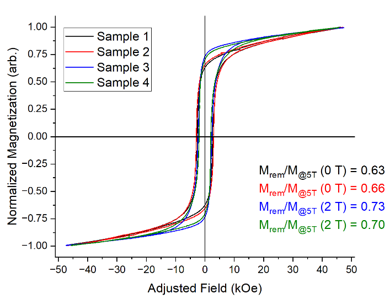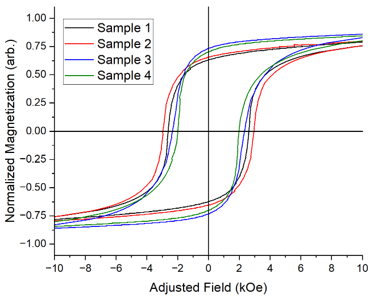CMI researchers from Oak Ridge National Laboratory and Ames National Laboratory conducted the activity for this highlight
Innovation
Hydrogenation-Disproportionation-Desorption-Recombination (HDDR) processed powders were produced in an applied field of 2 T and resulted in increased magnetic anisotropy.
Achievement
Accepted manuscript in Metals journal. Described reproducible HDDR process results demonstrating improved magnetic anisotropy.
Significance and Impact
- Established a new process to produce anisotropic HDDR powders
- Bonded Nd-Fe-B is the primary type of Nd-Fe-B magnet produced in North America; hence, production of enhanced powders can enable the U.S. magnet industry.
Hub Target Addressed
- Bringing a competitive advantage to domestic suppliers of bonded magnets.
- Improving material performance resulting in the use of smaller volumes of critical rare earths via lower loading fraction in bonded magnets and supplanting sintered magnets with bonded magnets.


